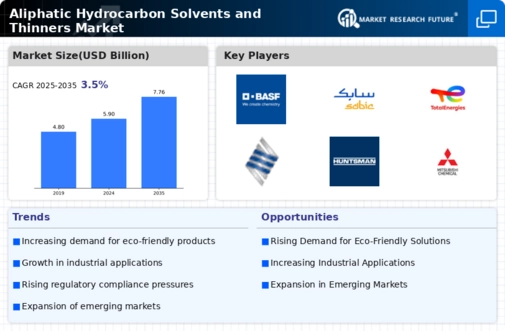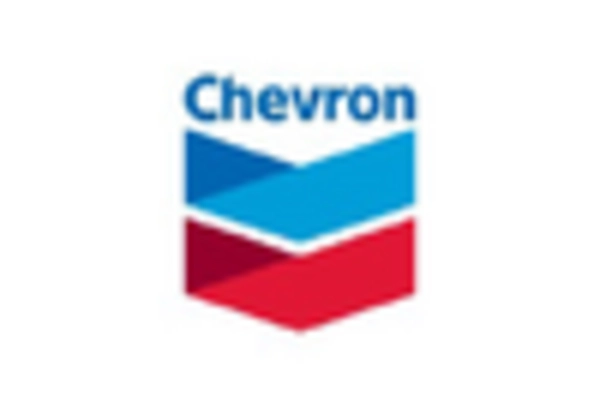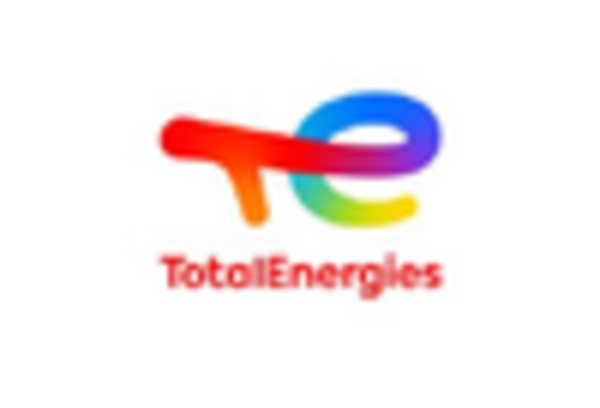Regulatory Pressures and Compliance
The Aliphatic Hydrocarbon Solvents and Thinners Market is currently navigating a landscape marked by stringent regulatory pressures aimed at ensuring environmental safety and worker health. Governments are implementing regulations that limit the use of volatile organic compounds (VOCs) in solvents, prompting manufacturers to reformulate their products. This shift towards compliance is likely to drive innovation, as companies seek to develop low-VOC and non-toxic alternatives. The market is expected to adapt to these changes, with a focus on sustainable practices that align with regulatory requirements. As a result, the Aliphatic Hydrocarbon Solvents and Thinners Market may witness a transformation in product offerings, catering to the evolving demands of consumers and regulatory bodies alike.
Rising Demand in Paints and Coatings
The Aliphatic Hydrocarbon Solvents and Thinners Market is experiencing a notable increase in demand driven by the expanding paints and coatings sector. This growth is largely attributed to the rising construction activities and the need for high-quality finishes in residential and commercial buildings. In 2025, the paints and coatings market is projected to reach a valuation of approximately 200 billion USD, with aliphatic solvents playing a crucial role in enhancing the performance and application of these products. The versatility of aliphatic hydrocarbon solvents, which are used to dissolve and disperse pigments, is likely to further bolster their demand in this sector. As manufacturers seek to improve product formulations, the reliance on these solvents is expected to persist, thereby sustaining growth in the Aliphatic Hydrocarbon Solvents and Thinners Market.
Increasing Use in Adhesives and Sealants
The Aliphatic Hydrocarbon Solvents and Thinners Market is benefiting from the rising use of solvents in adhesives and sealants applications. The construction and manufacturing sectors are increasingly relying on high-performance adhesives that require effective thinning agents for optimal application. In 2025, the adhesives market is projected to reach a value of over 60 billion USD, with aliphatic solvents playing a pivotal role in enhancing adhesion properties. This trend suggests a growing reliance on aliphatic hydrocarbon solvents, as manufacturers seek to improve product performance and application efficiency. Consequently, the Aliphatic Hydrocarbon Solvents and Thinners Market is likely to experience sustained growth driven by the expanding adhesives and sealants market.
Growth in Automotive and Industrial Applications
The Aliphatic Hydrocarbon Solvents and Thinners Market is significantly influenced by the automotive and industrial sectors. The increasing production of vehicles and machinery necessitates the use of solvents for cleaning, degreasing, and thinning applications. In 2025, the automotive industry is anticipated to witness a production of over 90 million vehicles, which will likely drive the demand for aliphatic solvents used in paint and coating processes. Additionally, the industrial sector's focus on maintaining equipment and machinery cleanliness further propels the need for effective solvents. This trend indicates a robust growth trajectory for the Aliphatic Hydrocarbon Solvents and Thinners Market, as manufacturers adapt to the evolving needs of these sectors.
Technological Advancements in Solvent Production
Technological advancements in the production of aliphatic hydrocarbon solvents are poised to enhance the efficiency and sustainability of the Aliphatic Hydrocarbon Solvents and Thinners Market. Innovations in extraction and refining processes are likely to reduce production costs and improve the quality of solvents. Furthermore, the development of bio-based aliphatic solvents is gaining traction, aligning with the increasing demand for environmentally friendly products. As companies invest in research and development, the introduction of new formulations that meet stringent regulatory standards is expected to reshape the market landscape. This evolution in production technology may lead to a more competitive environment within the Aliphatic Hydrocarbon Solvents and Thinners Market.


















Leave a Comment